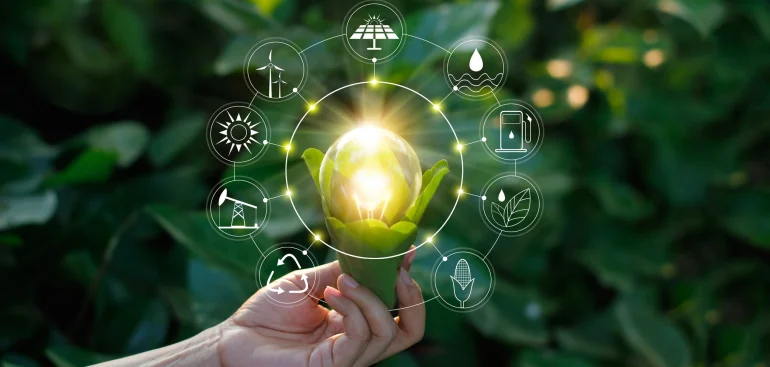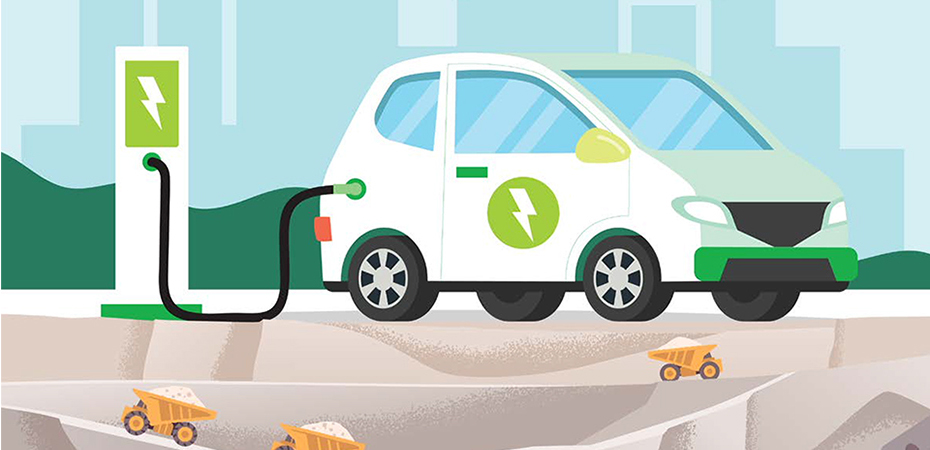Climate change is a current crisis rather than a threat from the future. The good news is that green technology advancements are stepping up to the plate globally. These solutions, which range from sustainable transportation to renewable energy, are not only beneficial to the environment but are also changing the way we travel, live, and work in the future.
Here are some of the leading green technology advancements that will have a significant impact on the battle against climate change in 2025 and beyond.
1. Solar Power of the Future
Although solar panels are not new, green technology is making them more intelligent, effective, and widely available than ever before.
Innovations to keep an eye on:
- Perovskite solar cells are more affordable and effective than conventional silicon solar cells.
- Transparent solar windows: Convert structures into energy producers
- Solar paint is a substance that produces energy by absorbing sunlight.
Why it matters: Solar energy is a clean, abundant, and renewable resource that is essential to lowering global carbon emissions.
2. Floating and Offshore Wind Farms
One of the mainstays of renewable energy has always been wind power. The possibilities are now being expanded by offshore and floating wind turbines, which are producing more power in more places.
For instance:
- The first floating wind farm in the world is Hywind Scotland.
- China is the world leader in the scope of its deep-sea wind projects.
Why it matters: New areas for the production of renewable energy are made possible by offshore wind farms, which also provide more reliable energy.
3. Green Hydrogen
The most prevalent element in the universe is hydrogen, but green hydrogen, which is created from renewable resources, is a revolutionary development in clean energy.
Examples of use:
- Vehicle fuel, particularly for trucks and buses
- Source of industrial energy (cement, steel)
- Extended-duration energy storage
Why it matters: Carbon-free green hydrogen can aid in the decarbonization of hard-to-electrify sectors.
4. Energy Storage and Smart Grids
Electricity’s future depends on efficiency, resilience, and storage in addition to generation.
Leading-edge technologies:
- Real-time supply and demand balancing of smart grids
- Innovations in batteries (such as iron-air and solid-state batteries)
- Grid-scale energy storage that maintains power during renewable energy outages
Why it matters: Clean power is always accessible thanks to dependable energy storage, even in the absence of the sun or wind.
5. Sustainable Transportation with Electric Vehicles (EVs)
EVs are essential to a low-carbon future; they are more than just stylish vehicles.
Green transportation trends include:
- EVs with greater range and quicker charging
- Electric trucks and buses are transforming freight and public transportation.
- E-scooters and bike sharing lower emissions in cities.
Why it matters: Since transportation is responsible for around 25% of global emissions, it must be electrified.
6. Climate Monitoring Driven by AI
More accurately than ever before, scientists and decision-makers are using artificial intelligence (AI) to monitor, forecast, and react to climate patterns.
AI assists by:
- Real-time tracking of emissions and deforestation
- Forecasting severe weather conditions
- Optimizing smart city energy use
Why it matters: Quicker, better decisions that safeguard people and the environment are made possible by more intelligent insights.
7. Capturing and Storing Carbon (CCS)
While cutting emissions is important, removing carbon from the atmosphere is also becoming more and more important.
Among the solutions are
- Devices known as Direct Air Capture (DAC) that extract CO₂ from the atmosphere
- Concrete and building materials that store carbon
- Improved weathering of rocks to trap CO₂ underground
Why it matters: We can begin correcting climate damage by using CCS to offset inevitable emissions.
Concluding remarks
Although the battle against climate change is urgent, there is still hope because of cutting-edge green technologies. These innovations are transforming sectors, empowering societies, and providing us with a model for a more sustainable future.
Although corporations and governments have a significant impact, personal decisions are also important. Encourage clean technology, keep yourself updated, and contribute to the global movement toward a more environmentally friendly future.





